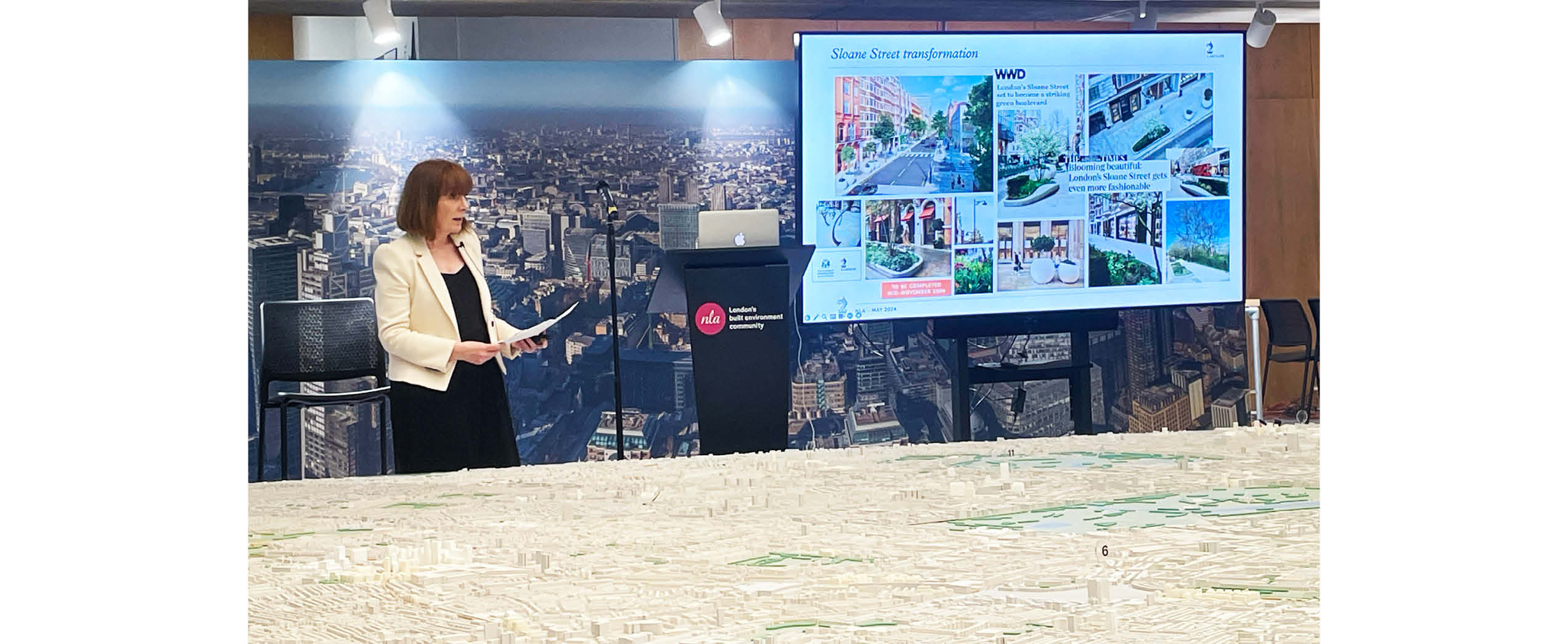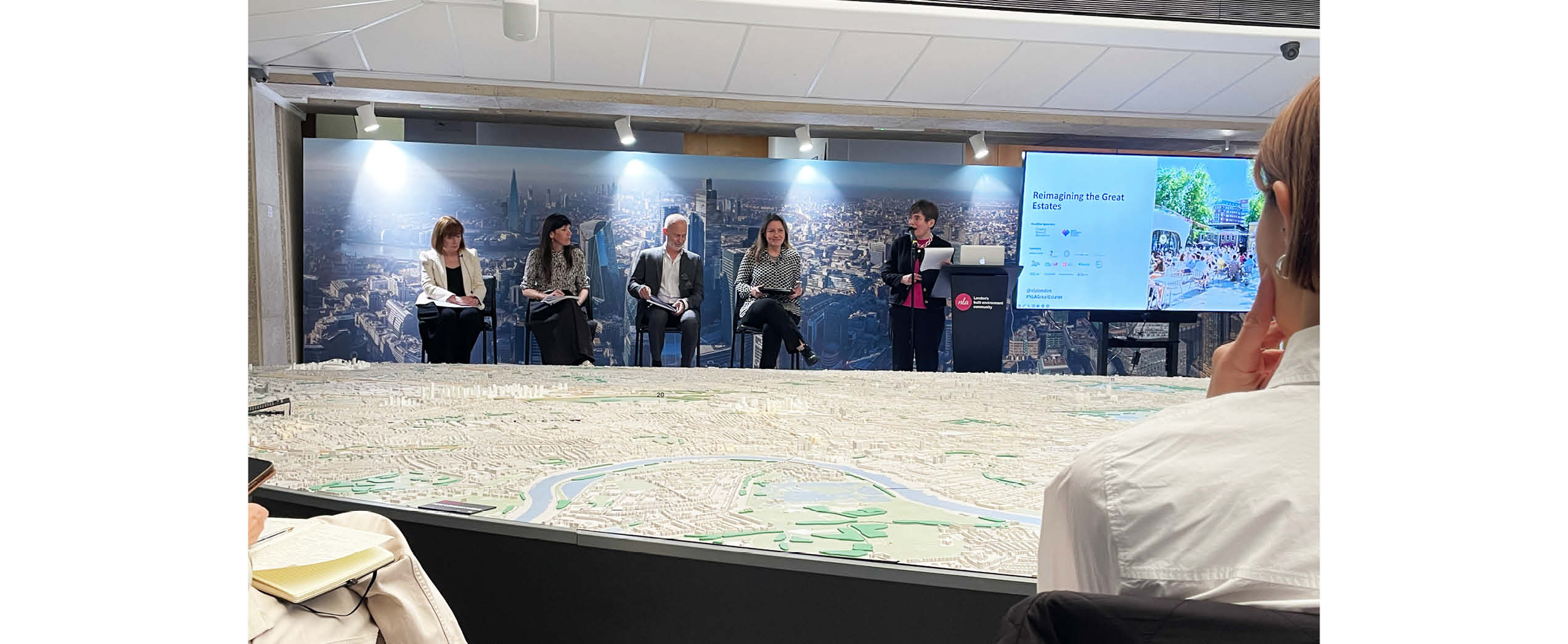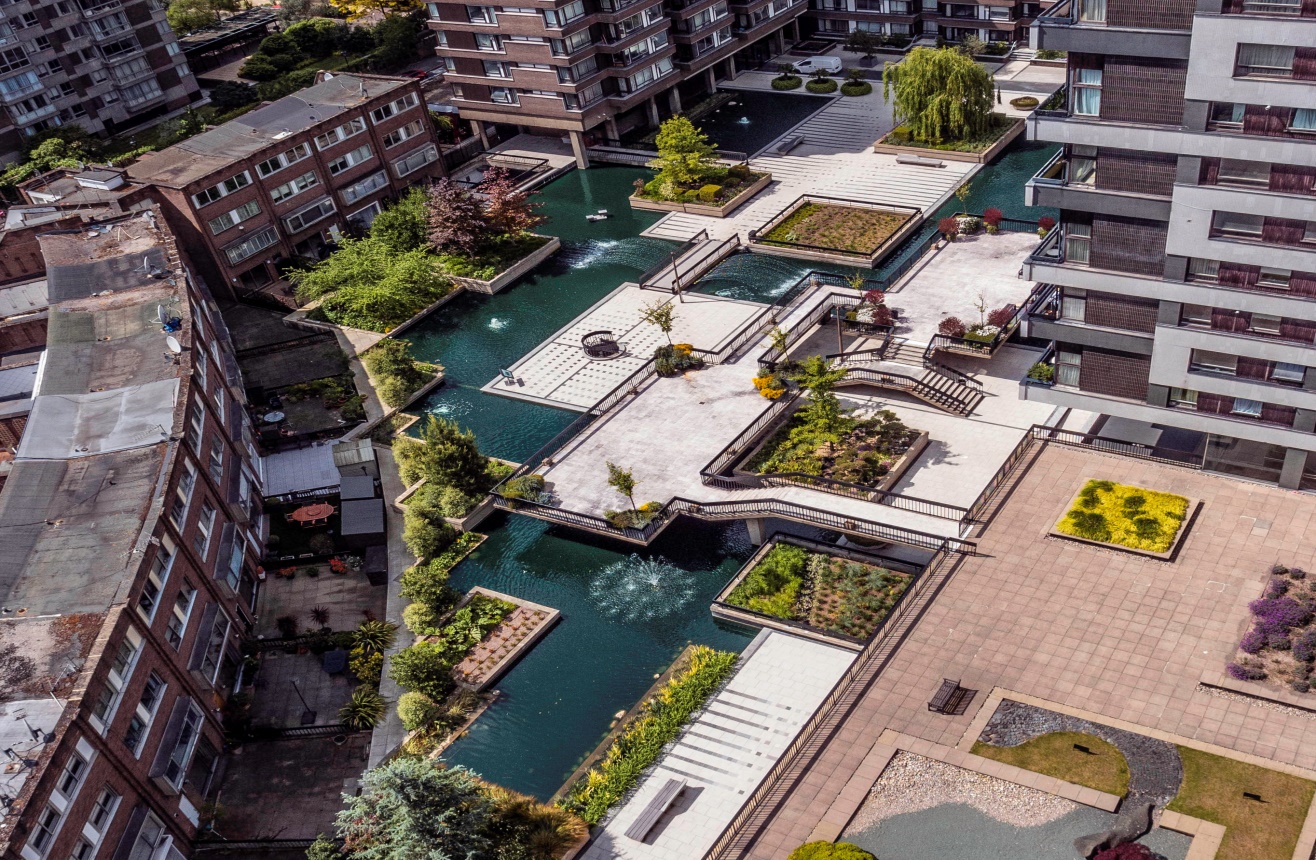
London's Stewards - Great Estates
SHARE
Following on from the launch of
the Second Edition of ‘Great Estates: Models for Modern Placemaking’ earlier
this year, NLA invited a panel of experts to discuss how
historic and modern estates are navigating the challenges and opportunities
within London’s competitive landscape, and how to cultivate places of
lasting value for generations to come.
Jane Henshaw, Projects Director of
the Cadogan Estate kicked off proceedings. Jane spoke
passionately about making Chelsea a place for people to be. She emphasised that
social, economic and environmental sustainability is at the core of the
estate’s strategy. Jane highlighted the importance of working closely
with the Royal Borough of Kensington and Chelsea,
that they shared mutual respect. She also emphasised the significance of
engaging with the community to promote prosperity in the area. Jane also shared
updates on Sloane Street’s transformation into a green boulevard which was
developed following extensive public consultation with residents and
businesses.
Jane’s presentation was
followed by a panel discussion involving Caroline Cameron from Places
for London, Julian Robinson from LSE and
our very own Director, Cristina Refolo.
Caroline Cameron has big plans
for London with ambitious residential proposals that boast 50% affordable
housing. She talked about investment into existing workspaces, shops and
arches, making them greener, safer and more accessible, and helping businesses
to thrive pandemic. Places
for London, TfL’s new and financially independent property company, has high
ambitions to unlock TfL land for a more biophilic, sustainable and well-connected
London.
Julian Robinson pointed out
that whilst LSE is internationally recognised, few people know where it is in
London and this is something he has been working on when he took on
the role of Director of Estates nearly 20 years ago. The LSE has been transforming
its London Aldwych campus over the past 15 years. Julian’s vision has always
been to create a university quarter in London rather than a campus which gives
students and staff a better connection with the city and a reason to spend more
time in the area. The school has consultations with the students and it is quickly
apparent that they place their priority on increasing green infrastructure within
the public realm.
When it comes to sustainable
and long-term planning – landscape architects know a thing or two! Cristina defined the overarching role of landscape architects is to connect the dots between the natural and
the artificial , science and art, social reform and climate mitigation,
sustainability and aesthetics, macro and micro scales, biodiversity and
maintenance. The glory of London’s estates is their long-term management
because if sustainable systems are in place, the projects we design and build
today will be here in the next century;
The Water Gardens in the Hyde Park Estate
being a perfect example. Cristina’s
talk resulted in a
lively discussion about the importance of trying to ringfence funding for
maintenance and how to deal with electoral cycles alongside long-term planning.

Cristina Refolo is joined by a panel of experts to discuss place making
After a break, we turned our attention to the importance of
culture and community and the amazing opportunities there are in
London to embrace both. Mark Williams, Deputy Chief Executive
at Heart of London BID showed the audience how COVID forced
the West End to come up with innovative ways to share art with Lockdown
London and the important role estates have in protecting culture and
business in the city.
Laura Whyte, Senior Asset Manager for
the Church Commissioners for England, talked about the pivotal
role St John’s Church continues to play within the community since it
was first consecrated in 1832. The various resident associations
across the Church Commissioners Hyde Park Estate continue to provide an
essential sounding board for future plans. Communication is catered to the
individual user so that everyone has a chance to comment. Laura expressed that the
Church Commissioners strive to make the
right decisions today to the benefit of the asset managers that will be the future
stewards of the estate.
Carl Konadu, CEO of 2-3 Degrees had
some startling statistics about youth engagement across the city. Ninety-eight
per cent of 16-25-year-olds surveyed said that they did not trust
developers, 89% said
they had never been consulted regarding plans within
their communities and 82% said they would like to have a say.
If we want
to deliver something meaningful, community engagement must be more clear,
honest and with clear level of feedback expectations from the public. Carl said that only by looking at the
past, present and future can we hope to be effective stewards of our
landscapes.
Finally, Fiona Stewart, Associate at Hawkins
Brown, shared her experience of public consultation with the new Earls
Court Exhibition development which is promising 4,000 homes in west London. There is a huge multidisciplinary team involved
and it has been important to be transparent from the very beginning. Getting to know what the public wants for the area
before designing is the only way forward if we want to create spaces that
people will love and look after.
It was inspiring to see so many
people engaged in London’s great estates, historic and new. Our city is fizzing
with innovative place-making initiatives, we just need to be more
strategic about measuring these success stories and sharing them with the rest
of the world!

Community and Cultural Engagement Panel

The Water Gardens, Hyde Park Estate
